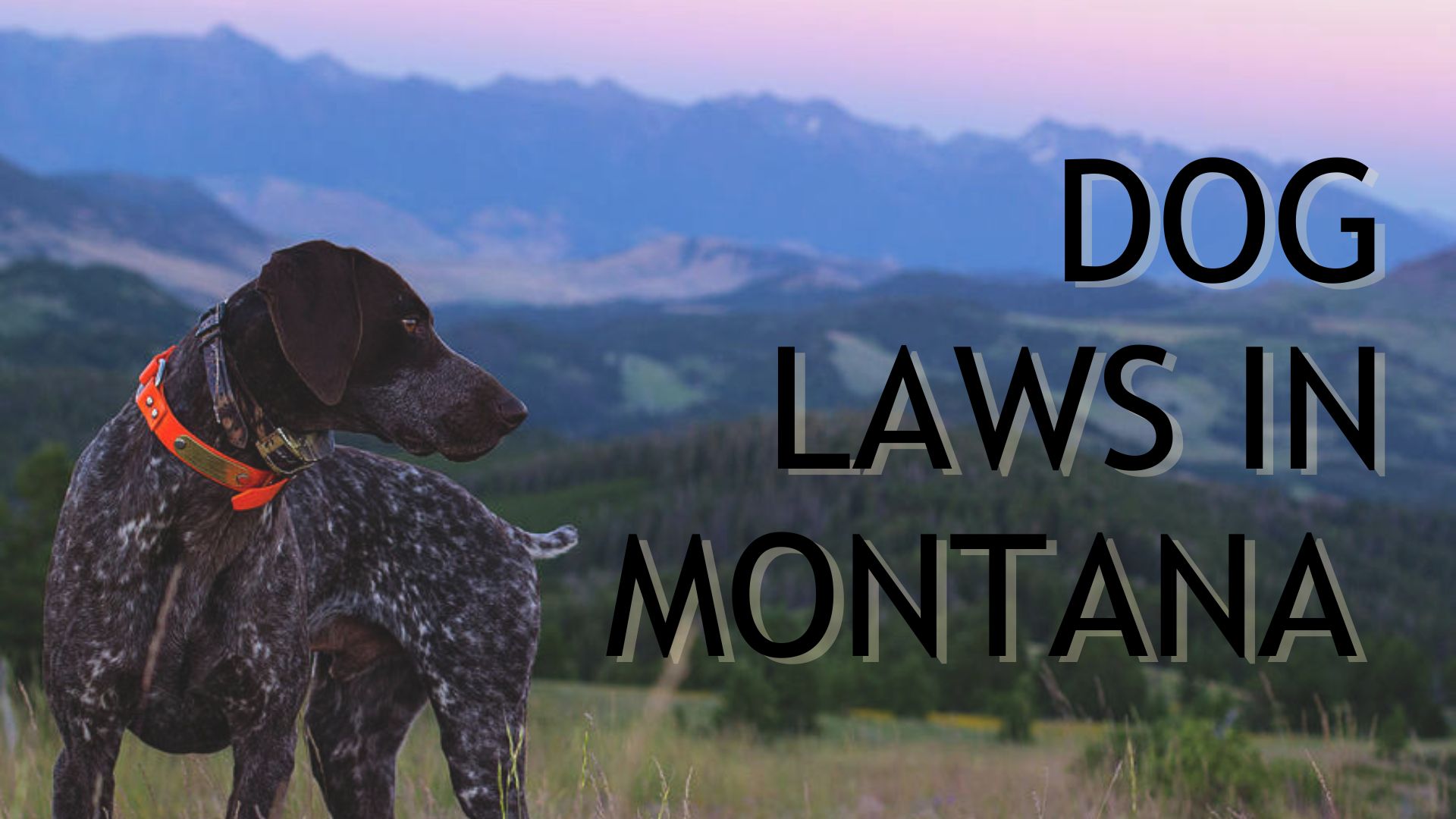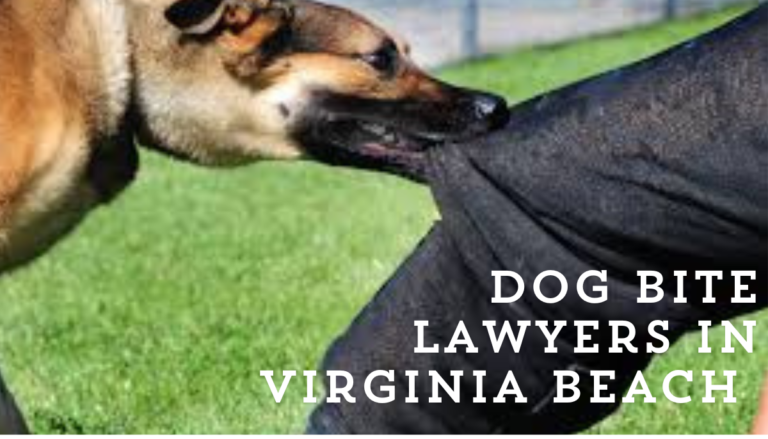Dog Laws in Montana
Wagging my tail with excitement across 88 million pet-owning households in the USA, I can’t stress enough the importance of understanding dog laws! Whether you’re cuddling a cuddly Cavalier King Charles or wrestling with a rambunctious Rottweiler, knowing the legalities keeps you, your pup, and your community happy.
Dog laws in Montana, like most states, cover a wide range of topics, from licensing and leash requirements to bite liability and barking regulations. By familiarizing yourself with these guidelines, you can ensure your furry friend enjoys the Big Sky Country responsibly and safely. So, let’s dig into Montana’s dog legalese and make sure your pup’s adventures are as lawful as they are fun!
Table of Contents
Dog Bite Laws in Montana
Living in Montana, the “Big Sky Country,” is a dream for many dog owners. With wide-open spaces and breathtaking scenery, it’s the perfect place for your furry friend to explore. But with all that freedom comes responsibility, especially when it comes to dog bites. Understanding Montana’s dog bite laws can help you avoid legal trouble and ensure the safety of your community.

Understanding Montana’s Strict Liability Dog Bite Statute
Montana follows a strict liability dog bite statute, meaning the dog owner is liable for any damages caused by a bite, regardless of prior knowledge of the dog’s aggressive tendencies. This applies in specific locations:
- Incorporated cities and towns: If your dog bites someone without provocation in a public place or lawfully on private property within an incorporated city or town, you, the owner, are held liable for the damages, even if the dog has never bitten anyone before.
It’s important to note that this strict liability only applies in incorporated areas. Let’s break down the key components of the law:
- Without provocation: The person bitten must not have been teasing, harassing, or threatening the dog.
- Lawfully on private property: This includes mail carriers, meter readers, or anyone else with a legitimate reason to be on the property.
- Damages: This encompasses medical bills, lost wages, emotional distress, and other losses stemming from the bite.
Montana Statute
- Section 27-1-715: Liability of owner of vicious dog
What Happens Outside of Incorporated Cities and Towns?
While the strict liability law offers clear guidelines in incorporated areas, things get murkier outside city limits. Here, common law negligence principles generally apply. This means the person bitten would need to prove the owner was negligent in handling their dog, such as failing to leash it or properly secure it.
Other Dog Bite Laws in Montana
While the strict liability statute is the primary dog bite law in Montana, there are other relevant regulations:
- Leash Laws: Many cities and towns in Montana have leash laws requiring dogs to be on a leash in public places. Not following these leash laws could result in fines, even if there’s no bite.
- Rabies Vaccination: Montana law requires all dogs over four months old to be vaccinated against rabies. Ensure your furry friend’s vaccinations are up-to-date to avoid hefty fines and potential quarantine.
- Dangerous Dog Designation: Local authorities can designate a dog as “dangerous” based on past bites or aggressive behavior. This designation often comes with stricter regulations, like muzzling or confinement requirements.
What to Do After a Dog Bite in Montana
If you or someone you know is bitten by a dog in Montana, here are the critical steps to take:
- Seek Medical Attention: The most crucial step is to ensure the person receives proper medical care to clean and treat the wound. Get a doctor’s report documenting the bite and any injuries sustained.
- Report the Bite: Report the dog bite to Animal Control, regardless of location. This helps track dog bite incidents and investigate if necessary.
- Document Everything: Take pictures of the bite wound, the dog (if possible), and the scene of the incident.
- Understand Your Options: If you’ve been bitten, you may have the right to seek compensation from the dog owner for medical bills, lost wages, and other damages. Consulting an attorney specializing in dog bite cases can help you understand your legal options.
Remember, prevention is always better than cure. Responsible dog ownership practices like proper training, socialization, and keeping your dog leashed in public spaces can significantly reduce the risk of bites.
Dog Barking and Noise Laws in Montana
Living in Montana with your furry friend can be a dream come true. Picture this: crisp mountain air, breathtaking scenery, and endless opportunities for outdoor adventures with your loyal companion. But with that idyllic picture comes the reality of responsible dog ownership, which includes managing your dog’s barking to ensure a harmonious community environment.
Montana, like many states, recognizes the right to peaceful enjoyment of one’s property. This means excessive dog barking can be considered a nuisance and subject to legal repercussions. This guide will delve into Montana’s dog barking and noise laws, helping you ensure your pup’s vocal expressions don’t ruffle any feathers (or fur!).

Statewide Dog Barking Law
The short answer is no. Montana doesn’t have a single, unified dog barking law across the entire state. The authority to regulate noise, including barking dogs, falls primarily on local governments, meaning counties and municipalities can enact their own ordinances.
County and City Ordinances
Since Montana empowers local authorities, the specific laws regarding dog barking will vary depending on your location. Here’s what you need to know:
- Check Your County or City Website: Most counties and cities in Montana have their ordinances readily available online. Look for sections pertaining to “noise” or “animal control.”
- Commonalities in Ordinances: While specifics differ, many Montana ordinances share common themes regarding dog barking:
- Focus on Excessive and Unreasonable Barking: The laws typically target prolonged, continuous barking that disrupts the peace and quiet of the neighborhood.
- Time Restrictions: Some ordinances might have specific timeframes where excessive barking is considered a nuisance, like nighttime hours.
- Number of Violations: Often, ordinances have a tiered system where warnings are issued initially, followed by fines for repeated violations.
Examples of Dog Barking Ordinances in Montana Cities
While a comprehensive list is impossible due to variations, here are some examples from Montana cities to illustrate the range of regulations:
- City of Great Falls: The ordinance prohibits “loud and continuous barking, howling, or yelping” that interferes with the peaceful enjoyment of life or property
- City of Bozeman: Bozeman’s noise ordinance defines a violation as any sound that “unreasonably annoys, disturbs, injures, or endangers the comfort, repose, health, safety, or peace of others”
Tips to Minimize Excessive Dog Barking
Here’s how you can be a responsible dog owner and a good neighbor:
- Proper Training and Socialization: Invest in training your dog basic obedience commands like “quiet” or “hush.” Early socialization helps your dog feel comfortable and less likely to bark out of fear or anxiety.
- Identify Triggers: Observe what triggers your dog’s barking, like unfamiliar sounds or being left alone for extended periods. Address the root cause with training or environmental adjustments.
- Provide Enrichment: Ensure your dog has enough physical and mental stimulation to prevent boredom, a common cause of barking.
- Consider Desensitization Techniques: If your dog barks at specific stimuli, work with a professional trainer on desensitization and counterconditioning techniques.
Other Noise Considerations
While barking is a common concern, Montana’s noise ordinances might encompass other pet-related disturbances, like:
- Whining and Howling: Persistent vocalizations beyond barking can also be considered a nuisance.
- Animal Fights: Noisy altercations between pets are a clear violation of peace and quiet.
- Outdoor Enclosures: Make sure your dog’s outdoor kennel or enclosure is properly soundproofed to minimize barking noise from disturbing neighbors.
The Importance of Responsible Dog Ownership
Understanding and adhering to Montana’s dog barking and noise laws is crucial for responsible dog ownership. By managing your dog’s vocalizations, you can ensure a peaceful environment for yourself, your neighbors, and the entire community. Remember, a happy and well-trained dog is less likely to bark excessively.
Dog Poop Disposal Laws in Montana
Montana, the “Big Sky Country,” is a haven for outdoor enthusiasts and their furry companions. With vast landscapes and abundant trails, it’s the perfect place for your dog to explore. But with that freedom comes responsibility, and a crucial part of that is proper dog waste disposal.
Leaving dog poop behind isn’t just unpleasant; it can be a health hazard and a violation of local ordinances. This guide will equip you with the knowledge you need to navigate Montana’s dog waste disposal laws and be a responsible dog owner.

Statewide Dog Poop Law
Similar to dog barking regulations, Montana does not have a single, unified dog waste disposal law applicable across the entire state. The authority to regulate pet waste falls primarily on local governments, meaning counties and municipalities can enact their own ordinances.
Local Ordinances
While there’s no statewide law, most cities and towns in Montana have ordinances mandating the proper disposal of dog waste. These ordinances often address:
- Obligation to Pick Up: The most common provision requires dog owners to pick up after their pets in public places and on private property (with permission)
- Disposal Methods: Ordinances may specify acceptable disposal methods, such as carrying sealed bags and disposing of them in designated trash cans.
- Fines for Non-Compliance: Failure to pick up your dog’s waste can result in fines, typically increasing with repeated offenses.
Finding Your Local Dog Waste Disposal Ordinance
So, where do you find the specific dog poop disposal laws relevant to you? Here are some resources:
- County or City Website: Most local governments have their ordinances readily available online. Look for sections pertaining to “animal control” or “parks and recreation.”
- County or City Clerk’s Office: You can contact your local clerk’s office for information on relevant ordinances.
Dog Waste Disposal Ordinances in Montana Cities
While a comprehensive list is impossible due to variations, here are some Montana city examples to illustrate the range of regulations:
- City of Missoula: Missoula’s ordinance requires owners to remove and dispose of their dog’s waste in a sanitary manner. The city provides free “Mutt Mitts” at trailheads for convenient waste pick-up.
- City of Bozeman: Bozeman’s ordinance states that “no person owning or having control of a dog shall allow such dog to defecate upon any public or private property… without immediately removing such feces” [invalid URL removed].
The Environmental and Health Benefits of Proper Disposal
While adhering to local ordinances is important, responsible dog waste disposal goes beyond following the law. Here’s why scooping the poop is crucial:
- Protects Water Quality: Dog waste contains harmful bacteria and parasites that can contaminate waterways if left uncollected. This can have a devastating impact on aquatic ecosystems.
- Reduces Disease Transmission: Dog poop can harbor diseases transmissible to humans and other animals. Proper disposal helps minimize the risk of these diseases spreading.
- Keeps Public Spaces Clean and Safe: No one enjoys stepping in dog droppings! Proper disposal ensures public parks, trails, and sidewalks remain clean and enjoyable for everyone.
Responsible Dog Ownership: Be a Poop-Scooping Pro!
Here are some tips to be a responsible dog owner who leaves no trace (except paw prints!):
- Always carry poop bags: Make it a habit to carry a sufficient number of biodegradable poop bags whenever you’re out with your dog.
- Double-bag it: For extra security and odor control, consider using double bags.
- Dispose of waste properly: Look for designated trash cans or bring your own sealed bags home for disposal.
- Educate others: Lead by example and encourage fellow dog owners to practice responsible waste disposal.
Working Together for a Cleaner Montana
By understanding and complying with Montana’s dog waste disposal laws, we can all contribute to a cleaner and healthier environment for humans, animals, and the beautiful state of Montana. Remember, responsible dog ownership is about mutual respect for your furry friend, the community, and the environment.
Dog Licensing Laws in Montana
Montana, the “Big Sky Country,” offers endless opportunities for adventure with your canine companion. Whether it’s exploring majestic mountains or hiking scenic trails, your furry friend can join you in making memories. But before you hit the open road with your pup, ensure you’re a responsible dog owner by complying with Montana’s dog licensing laws.
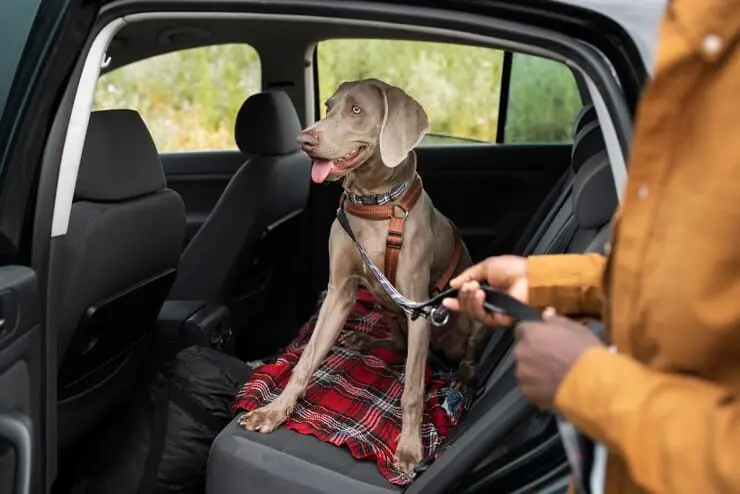
Why License Your Dog in Montana?
Dog licensing in Montana isn’t just about following the law; it offers several benefits:
- Public Safety: Licensing helps track dog vaccinations, ensuring your community is protected from rabies and other diseases.
- Lost Dog Recovery: A dog license tag with your contact information increases the chances of your furry friend being returned if they get lost.
- Funding for Animal Welfare Programs: Licensing fees often contribute to vital programs like animal shelters, rabies control, and spay/neuter initiatives.
Who Needs a Dog License in Montana?
In Montana, all dogs over four months old require a license, with some exceptions:
- Service Animals: Legally documented service animals are exempt from licensing requirements.
Where to Obtain a Dog License in Montana
The process for obtaining a dog license varies depending on your location. Here’s how to navigate it:
- County or City Licensing Office: Most counties and some cities have designated offices responsible for dog licensing. Check your local government website or contact your county clerk’s office for information on application forms and fees.
- Online Licensing: Many Montana counties offer convenient online licensing options through their websites.
What Information Do You Need?
When applying for your dog’s license, be prepared to provide:
- Proof of Rabies Vaccination: A current rabies vaccination certificate issued by a licensed veterinarian is mandatory.
- Dog Information: This includes your dog’s breed, age, and sex.
- Your Contact Information: Ensure your address and phone number are accurate for lost dog recovery purposes.
Dog License Fees in Montana
Dog license fees in Montana vary depending on factors like your location, sterilization status (spayed/neutered), and age of the dog. Generally, expect fees to fall within a range of:
- $10-$20 for initial licenses for sterilized dogs
- $20-$40 for initial licenses for unsterilized dogs
- Discounted rates for senior citizens or low-income pet owners (availability may vary)
Renewal Process for Dog Licenses in Montana
Most dog licenses in Montana are valid for one year. Renewal notices are typically sent by mail. You can renew your dog’s license:
- In-person: Visit your local licensing office.
- By Mail: Return the renewal form with the required fee by mail.
- Online: Many counties offer online license renewal options.
Fines for Non-Compliance
Failure to license your dog in Montana can result in fines. These fines vary by location but can be significant. It’s always best to comply with the law and avoid unnecessary penalties.
Additional Considerations for Dog Licensing in Montana
Here are some other important points to remember:
- New Residents: If you move to Montana with your dog, you’ll need to obtain a license within a specific timeframe (typically 30-60 days). Check with your local authorities for details.
- Transferring Licenses: If you move within Montana, you may not need a new license, but you might need to update your contact information with the new county.
- Lost License Tags: If your dog’s license tag is lost, you can usually obtain a replacement for a small fee.
Dog Leash Laws in Montana
Montana, with its vast landscapes and breathtaking scenery, is a haven for outdoor enthusiasts – and their furry companions! Imagine exploring majestic mountains, hiking scenic trails, or simply enjoying a stroll through the park with your loyal canine by your side. However, before you unleash your dog’s inner adventurer, it’s crucial to familiarize yourself with Montana’s dog leash laws.

Dog Leash Laws
Dog leash laws serve several important purposes:
- Public Safety: Leashes help prevent dog bites and ensure everyone feels safe when enjoying public spaces.
- Protecting Wildlife: Unleashed dogs can disrupt wildlife habitats and chase or even harm smaller animals.
- Preserving Public Property: Leashes help minimize damage to parks, trails, and other public areas caused by unleashed dogs.
- Promoting Responsible Dog Ownership: Leash laws encourage dog owners to maintain control of their pets.
Statewide Dog Leash Law
Similar to dog barking and waste disposal regulations, Montana doesn’t have a single, unified dog leash law applicable across the entire state. The authority to regulate leash requirements falls primarily on local governments, meaning counties and municipalities can enact their own ordinances.
Understanding County and City Leash Laws
Since Montana empowers local authorities, specific leash laws will vary depending on your location:
- Check Your County or City Website: Most counties and cities in Montana have their ordinances readily available online. Look for sections pertaining to “animal control” or “parks and recreation.”
- Commonalities in Leash Laws: While specifics differ, many Montana ordinances share common themes regarding dog leashes:
- Leash Required in Public Places: Most ordinances mandate that dogs be on a leash in public areas, like parks, trails, sidewalks, and public property.
- Leash Length Restrictions: Some ordinances specify the maximum leash length, often ranging from 6 to 10 feet.
- Off-Leash Areas: Some designated areas, like dog parks, might allow unleashed dogs under certain conditions (e.g., voice control, proper licensing, and vaccinations).
Finding Your Local Dog Leash Ordinance
Here are some resources to help you navigate leash laws in your area:
- County or City Website: As mentioned earlier, the websites of your local government will most likely contain relevant ordinance details.
- County or City Clerk’s Office: Contact your local clerk’s office for information on specific ordinances regarding dog leashes.
Examples of Dog Leash Laws in Montana Cities
While a comprehensive list is impossible due to variations, let’s explore some Montana city examples to illustrate the range of leash regulations:
- City of Missoula: Missoula requires dogs to be on a leash (maximum 6 feet) on all city streets, trails, and parks. However, designated off-leash areas exist under voice control with proper licensing and vaccinations.
- City of Bozeman: Bozeman’s ordinance states that “no person owning or having control of a dog shall permit such dog to run at large…” This implies a leash requirement in most public spaces [invalid URL removed].
Responsible Dog Ownership
While adhering to local leash laws is essential, responsible dog ownership goes beyond legal obligation. Here’s why keeping your dog on a leash is a good practice:
- Safety First: Leashes prevent your dog from running into traffic, approaching strangers unexpectedly, or chasing wildlife.
- Respect for Others: Not everyone enjoys interacting with unleashed dogs. Leashes ensure everyone feels comfortable using public spaces.
- Improved Training: Leash training helps develop good manners and obedience in your dog.
Responsible Leash Etiquette
Here are some tips for responsible leash etiquette while enjoying Montana’s outdoors with your dog:
- Use a sturdy leash and a properly fitted collar or harness.
- Maintain control of your dog at all times.
- Pick up after your dog’s waste (leashes make this easier!).
- Be mindful of others and respect their space.
- Only allow your dog off-leash in designated areas and ensure proper control under voice commands or a long lead.
Dangerous Dog Laws in Montana
Montana, the “Big Sky Country,” offers a paradise for outdoor adventures with your canine companion. However, ensuring a safe and harmonious environment for everyone requires responsible dog ownership. This includes understanding Montana’s dangerous dog laws, which come into play when a dog exhibits aggressive behavior that poses a threat to public safety.
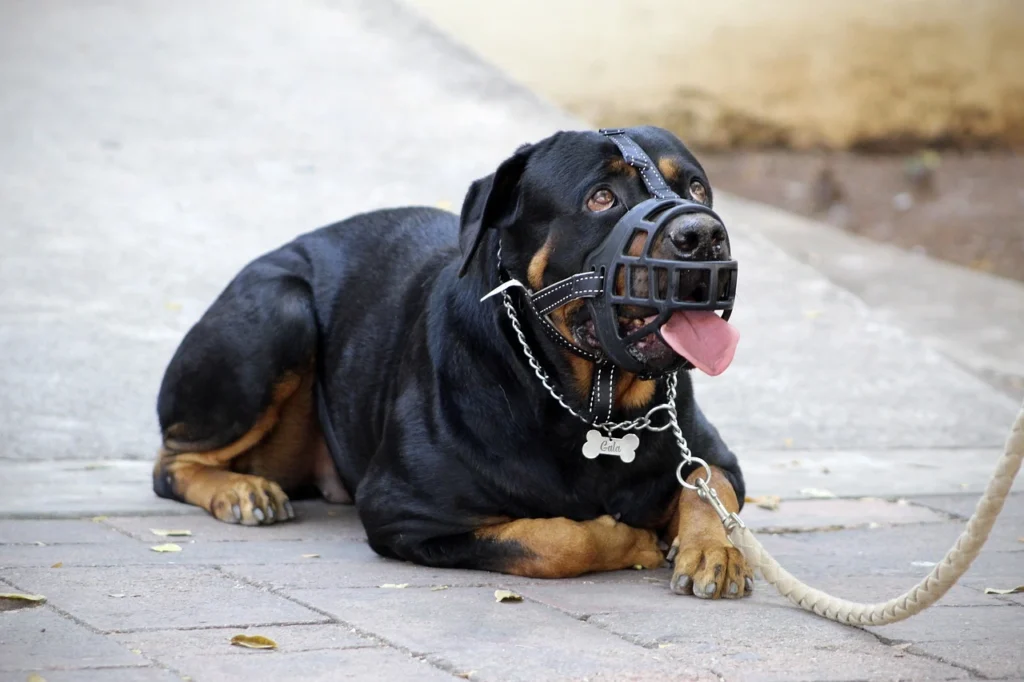
What Makes a Dog “Dangerous” in Montana?
Montana doesn’t have a single, all-encompassing definition of a “dangerous dog.” Instead, the designation is based on a dog’s past behavior and potential threat to public safety. Here are some factors authorities consider:
- History of Bites: A documented history of biting a person or another animal, especially without provocation, raises red flags.
- Severity of Bites: The severity of past bites, including injuries inflicted, will be heavily weighed in the dangerous dog designation process.
- Aggressive Behavior: Threats, growling, snapping, or other aggressive displays, particularly towards humans or other animals, can be considered.
- Neglect by Owner: If an owner fails to properly restrain or train their dog, leading to aggressive behavior, this can contribute to a dangerous dog designation.
The Designation Process
The process for designating a dog as “dangerous” typically involves the following steps:
- Incident Report: An animal control officer or law enforcement may investigate a reported dog bite or aggressive behavior.
- Hearing: A hearing might be held to assess the situation and evidence, including witness statements and veterinary records.
- Dangerous Dog Designation: Based on the hearing, the authorities may designate the dog as “dangerous.”
Important Note: The specific process for designating a dangerous dog can vary slightly depending on your location in Montana. It’s crucial to consult with your local animal control office for the most accurate information.
What Happens After a Dog is Deemed “Dangerous”?
If your dog is designated as dangerous, Montana law empowers local authorities to impose various restrictions:
- Muzzle Requirement: Your dog might be required to wear a muzzle in public at all times.
- Leash Restrictions: Stronger leashes and shorter leash lengths might be mandated, along with secure collars or harnesses.
- Confinement Requirements: Your dog might be required to be confined within a secure enclosure or indoors when not under direct supervision.
- Liability Insurance: You might be required to carry additional liability insurance for your dog.
- Financial Penalties: Fines or other financial penalties could be imposed.
Appealing a Dangerous Dog Designation
If you disagree with a dangerous dog designation, you may have the right to appeal the decision. The specific process for appeal will vary depending on your location. It’s highly recommended to consult with an attorney specializing in animal law for guidance on the appeals process.
Preventing Dangerous Dog Situations
The best way to avoid dealing with dangerous dog designations is to take proactive measures:
- Proper Training and Socialization: Invest in training your dog basic obedience commands and proper socialization from a young age.
- Responsible Ownership: This includes proper supervision, secure fencing, and addressing any signs of aggression early on.
- Breed Considerations: While any dog can exhibit aggression, researching breeds known for their temperament can help guide your decision.
Dog Health and Welfare Laws in Montana
Montana, with its breathtaking landscapes and endless outdoor adventures, is a dream come true for dog owners. But along with the joy of canine companionship comes the responsibility of ensuring your dog’s health and well-being. This comprehensive guide delves into Montana’s dog health and welfare laws, empowering you to be a responsible dog owner and provide your furry friend with the best life possible.
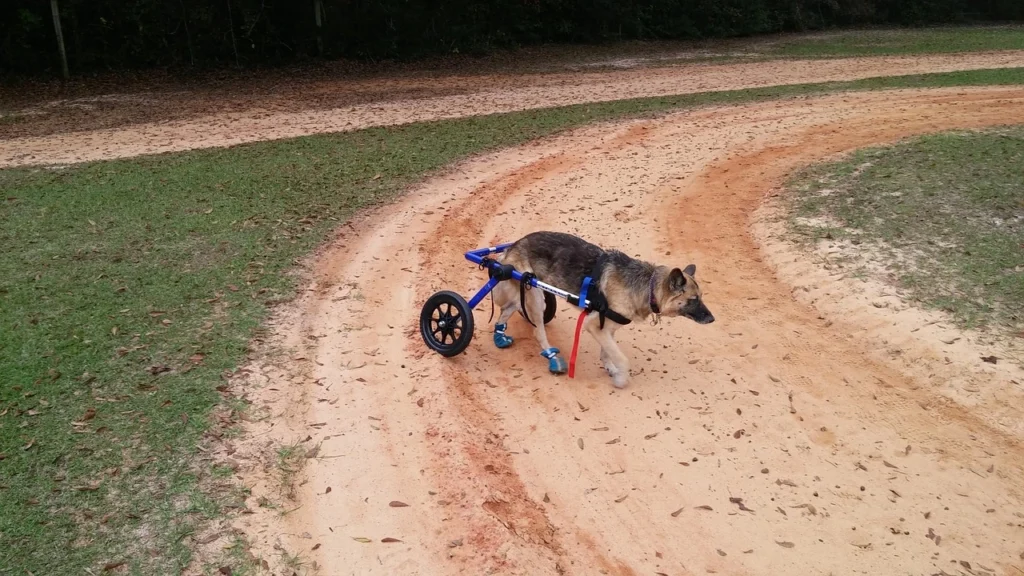
Dog Health and Welfare Laws
Similar to other regulations concerning dogs, Montana doesn’t have a single, unified dog health and welfare law. The primary authority for animal welfare falls on the Montana Department of Livestock (MDOL), but local governments can also enact ordinances to supplement these regulations.
Montana’s Animal Welfare Laws
The MDOL enforces several laws and regulations that directly impact dog health and welfare. Here are some key areas covered:
- Minimum Standards of Care: These regulations outline basic requirements for animal owners, including providing adequate food, water, shelter, and veterinary care.
- Prevention of Cruelty: Montana law prohibits animal cruelty, including neglect, abandonment, and inflicting unnecessary pain or suffering.
- Rabies Control: Vaccination against rabies is mandatory for all dogs over four months old in Montana.
Local Animal Welfare Ordinances
While the MDOL provides a foundation, many Montana counties and cities have additional ordinances addressing dog health and welfare. Here’s how to find them:
- County or City Website: Most local governments have their ordinances readily available online. Look for sections pertaining to “animal control” or “animal welfare.”
- Contacting Animal Control: Your local animal control office can provide information on relevant ordinances.
Local Dog Health and Welfare Ordinances
Since specifics vary, here are some Montana city examples to illustrate the range of regulations:
- City of Bozeman: Bozeman’s ordinance prohibits tethering a dog unattended for more than four hours within a 24-hour period, ensuring dogs have access to shelter and comfort [invalid URL removed].
- City of Great Falls: Great Falls has an ordinance mandating proper ventilation and temperature control in pet stores, safeguarding the well-being of animals housed for sale.
Responsible Dog Ownership
While adhering to Montana’s dog health and welfare laws is crucial, responsible dog ownership goes beyond legal requirements. Here are some ways to ensure your dog thrives:
- Veterinary Care: Schedule regular checkups and vaccinations to maintain your dog’s health and prevent disease.
- Proper Nutrition: Feed your dog a high-quality diet appropriate for their age, breed, and activity level.
- Exercise and Enrichment: Provide your dog with daily exercise and mental stimulation through walks, playtime, and interactive toys.
- Safe Environment: Ensure your home and yard are secure, preventing escape and potential hazards.
Additional Considerations for Dog Health and Welfare
Here are some other important aspects of responsible dog ownership in Montana:
- Breeding Regulations: Some Montana cities may have regulations regarding commercial dog breeding, such as licensing requirements and inspection protocols. Check with your local authorities if you plan to breed your dog.
- Microchipping: While not mandatory in Montana, microchipping your dog significantly increases the chances of recovering them if they get lost.
- Travel with Your Dog: If traveling with your dog within or outside of Montana, be aware of any health certificate or vaccination requirements for entry into certain areas.
Dog Public Access Laws in Montana
Montana, the “Big Sky Country,” beckons outdoor enthusiasts and their canine companions. From majestic mountains to scenic trails, Montana offers endless opportunities for adventure. But can your furry friend join you everywhere? Understanding Montana’s dog public access laws is crucial for responsible dog ownership and a smooth journey together.

Statewide Dog Public Access Laws
Unlike leash laws or dog waste disposal regulations, Montana doesn’t have a single, unified law governing dog access to public places. The authority to regulate public access for dogs falls primarily on local governments, meaning counties and municipalities can enact their own ordinances.
Local Ordinances
While there’s no single state law, most cities and towns in Montana have ordinances addressing dog access in public spaces. These ordinances often specify:
- Allowed vs. Prohibited Areas: This details where dogs are welcome (e.g., parks, trails) and where they’re not (e.g., public buildings, playgrounds).
- Leash Requirements: Some areas may allow unleashed dogs under specific conditions (e.g., voice control, proper licensing, and vaccinations).
- Restrictions on Breed: Certain ordinances might restrict access for specific breeds based on local regulations (although such breed-discriminatory laws are becoming increasingly rare).
- Fines for Non-Compliance: Failure to adhere to access regulations can result in fines.
Local Dog Public Access Ordinance
So, where do you find the specific dog public access laws relevant to you? Here are some resources:
- County or City Website: Most local governments have their ordinances readily available online. Look for sections pertaining to “parks and recreation” or “animal control.”
- County or City Clerk’s Office: Contact your local clerk’s office for information on relevant ordinances regarding dog access.
Examples of Dog Public Access Ordinances in Montana Cities
Here are some Montana city examples to illustrate the range of access regulations (remember, specifics can vary):
- City of Missoula: Missoula allows dogs on most trails on a leash (maximum 6 feet) but prohibits them in specific areas like playgrounds and swimming pools. Designated off-leash areas exist under voice control with proper licensing and vaccinations
- City of Bozeman: Bozeman allows dogs in most parks on a leash (no specific length stated) but prohibits them in some areas like the splash pad and specific trails [invalid URL removed].
Understanding “No Dogs Allowed” Signs
Even with local ordinances, encountering “No Dogs Allowed” signs can be confusing. Here’s what to keep in mind:
- Private Property vs. Public Spaces: These signs typically apply to private businesses or specific areas within public spaces with restrictions.
- Respect the Signs: Always respect posted signage, even if unclear. If unsure, contact the park or business owner for clarification.
Responsible Dog Ownership for Public Access
Following public access laws is essential, but responsible dog ownership goes beyond legal requirements. Here’s how to ensure your dog enjoys public spaces while respecting others:
- Leash Training: A well-leashed dog ensures control and minimizes disruption for others.
- Voice Control: Train your dog to respond to your commands, allowing for more freedom in designated off-leash areas.
- Clean Up After Your Dog: Always carry waste bags and dispose of waste properly to maintain a clean and pleasant environment for everyone.
- Be Mindful of Others: Not everyone enjoys interacting with dogs. Be respectful of people who may feel uncomfortable around your pet.
Advocacy for Dog-Friendly Access
Many dog owners appreciate dog-friendly public spaces. Here are some ways to get involved:
- Support Businesses and Parks Welcoming Dogs: Patronize businesses and parks that allow dogs and express your appreciation.
- Stay Informed on Proposed Ordinances: Be aware of potential changes to public access regulations and voice your opinion at public hearings.
Working Together for Shared Enjoyment
By understanding Montana’s dog public access laws and practicing responsible dog ownership, we can ensure both humans and canines enjoy Montana’s beautiful public spaces. Remember, responsible dog owners create positive experiences, paving the way for continued dog-friendly access in the future.
Dog Travel and Transportation Laws in Montana
Montana, with its breathtaking landscapes and endless adventures, is a dream destination for many, and furry companions are often part of the travel plans. But before embarking on a road trip or exploring hiking trails with your dog, it’s crucial to understand Montana’s dog travel and transportation laws. This comprehensive guide equips you with the knowledge you need for a smooth and safe journey with your canine friend.
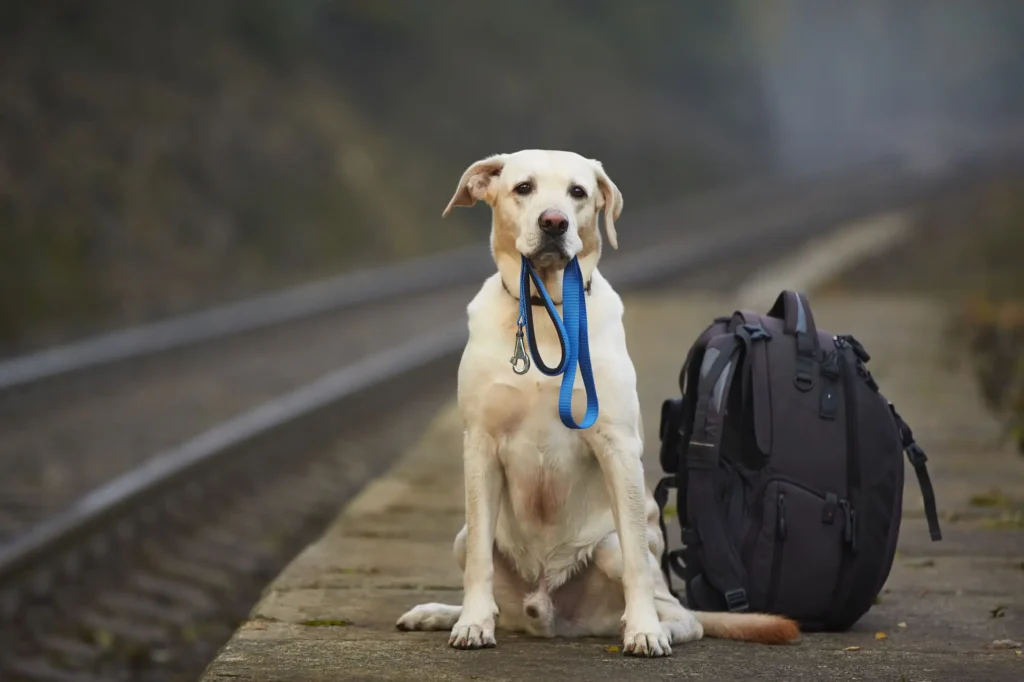
Dog Travel Laws
Unlike some states, Montana doesn’t have a single, unified set of dog travel laws. However, there are regulations and considerations you should be aware of:
- Health Requirements: Rabies vaccination is mandatory for all dogs over four months old in Montana. Ensure your dog’s rabies vaccination is current and documented by a certificate for potential travel within or outside the state.
- Local Ordinances: Some Montana counties or cities might have specific ordinances regarding transporting dogs in vehicles. These could involve securing your dog with a crate or harness while traveling. Always check with your local authorities before embarking on your trip.
General Guidelines for Safe Dog Transportation
While there are no specific laws, prioritizing your dog’s safety during travel is paramount. Here are some best practices:
- Secure Your Dog: Never allow your dog to roam freely in the car. Use a crate, harness with a tether, or a pet carrier to prevent them from becoming projectiles in case of a sudden stop or accident.
- Temperature Control: Maintain a comfortable temperature inside the vehicle. Avoid leaving your dog unattended in a hot car, even with windows cracked open.
- Hydration and Breaks: Plan regular breaks for your dog to relieve themselves, stretch their legs, and access water.
- Familiarization: If your dog isn’t accustomed to car rides, gradually introduce them through short trips before embarking on a longer journey.
Additional Considerations for Dog Travel
Beyond the basics, here are some other things to keep in mind when traveling with your dog in Montana:
- Service Animals: Legally documented service animals are exempt from most travel restrictions. However, some businesses or public spaces may have limitations on service animals depending on the specific situation. Always check individual policies.
- Flying with Your Dog: If flying with your dog, airlines have specific regulations regarding pet transportation in the cabin or cargo hold. Research airline policies well in advance, understand size and breed restrictions, and make necessary reservations for your furry friend.
- Traveling Across State Lines: Health certificate requirements for dogs entering other states can vary. Research regulations for your destination state and obtain any necessary documentation from your veterinarian before crossing state lines.
Planning for a Smooth and Safe Dog-Friendly Adventure
By understanding Montana’s travel-related considerations for dogs and implementing responsible practices, you can ensure a stress-free and enjoyable travel experience for both you and your furry companion. Remember, planning and preparation are key for a successful dog-friendly adventure.
General Dog Travel Tips
Here are some additional tips for traveling with your dog anywhere:
- Pack Essentials: Don’t forget essential items like food, water bowls, leash, waste bags, medications, and a familiar comfort item for your dog.
- Research Dog-Friendly Accommodations: Look for hotels, motels, or vacation rentals that welcome dogs.
- Plan Dog-Friendly Activities: Research dog-friendly trails, parks, and attractions to incorporate into your travel itinerary.
- Maintain Updated Identification: Ensure your dog’s collar has a current ID tag with your contact information. Consider microchipping your dog for added security.
Dog Housing and Accommodation Laws in Montana
Montana, with its majestic mountains and vast landscapes, is a haven for outdoor enthusiasts – and their canine companions. But when it comes to finding a place to call home, navigating dog housing and accommodation laws in Montana can feel like climbing a mountain itself. Worry not, fellow adventurer! This comprehensive guide equips you with the knowledge you need to find a dog-friendly haven in Montana.

Statewide Dog Housing Laws
Unlike some states, Montana doesn’t have a single, unified law governing dogs in housing. The legal landscape regarding dog-friendly housing involves a combination of federal and local regulations:
- Federal Fair Housing Act (FHA): This federal law prohibits discrimination against individuals with disabilities based on the need for a service animal. While not directly addressing pet dogs, it protects tenants with service animals from being denied housing or charged additional fees.
- Local Ordinances: Many Montana cities and counties have ordinances related to dog ownership within their jurisdiction. These ordinances might touch upon limitations on the number of dogs allowed per household within a rental unit.
Fair Housing Act (FHA) and Service Animals
The FHA plays a crucial role in ensuring fair housing opportunities for people with disabilities who rely on service animals. Here’s what you need to know:
- Service Animal vs. Pet: The FHA defines a service animal as a dog (or miniature horse) trained to perform tasks to assist an individual with a disability. Emotional support animals (ESAs) are not covered under the FHA.
- Reasonable Accommodation: Landlords are obligated to provide reasonable accommodation for tenants with service animals. This could involve waiving a “no-pet” policy or allowing a reasonable number of service animals.
- Documentation Requirements: Landlords cannot request documentation certifying a service animal’s training or qualifications. They can, however, ask for verification of the disability and the service animal’s connection to the disability.
Local Ordinances and Dog Limits
While the FHA protects service animals, some Montana cities or counties might have ordinances limiting the number of pets allowed per household within a rental unit. Here’s how to find out:
- City or County Website: Most local governments have their ordinances readily available online. Look for sections pertaining to “rental housing” or “animal control.”
- Contacting Your Local Landlord Association: Landlord associations can provide insights into local regulations and dog-related policies in rental agreements.
Finding Dog-Friendly Housing Options in Montana
With a little research, you can increase your chances of finding a dog-friendly place to live in Montana:
- Search Dog-Friendly Rentals: Many online rental platforms allow you to filter searches for properties that welcome dogs.
- Contact Property Management Companies: Inquire about their pet policies and inquire if they manage any dog-friendly properties.
- Consider Renting from Private Landlords: Some private landlords may be open to responsible dog owners, even if the property doesn’t explicitly advertise as dog-friendly. However, understand that they may have specific requirements or restrictions.
Building a Strong Case for Your Dog
When applying for rentals, here are some ways to present yourself and your dog in the best light:
- Highlight Your Responsible Ownership: Provide references from previous landlords who can attest to your responsible pet ownership habits.
- Offer to Meet the Landlord with Your Dog: This allows the landlord to see firsthand your dog’s temperament and well-behaved nature.
- Be Prepared to Answer Questions: Landlords might inquire about your dog’s breed, size, and vaccination status. Be prepared to answer these questions openly and honestly.
Responsible Dog Ownership for Tenants
While understanding the legalities is important, responsible dog ownership is paramount:
- Adhere to Lease Agreements: Even in dog-friendly rentals, lease agreements might specify limitations on the number of dogs allowed, breed restrictions (although these are becoming less common), or specific pet policies.
- Maintain a Clean and Healthy Environment: Regularly clean up after your dog, prevent excessive barking, and ensure your dog doesn’t cause any damage to the property.
- Consider Pet Insurance: Pet insurance can help cover unexpected vet bills, offering peace of mind for you and potentially making you a more attractive tenant to landlords.
Dog Adoption and Sale Laws in Montana
Montana, with its wide-open spaces and adventurous spirit, is a dream come true for many dog lovers. Whether you’re considering welcoming a furry friend through adoption or purchasing a purebred pup, understanding Montana’s dog adoption and sale laws is crucial. This comprehensive guide equips you with the knowledge to make informed decisions and navigate the responsible acquisition of your canine companion.

Dog Adoption and Sale Laws
Unlike some states, Montana doesn’t have a single, unified set of laws governing dog adoption and sale. The regulations for acquiring a dog depend on the source:
- Animal Shelters and Rescue Organizations: Adoptions from shelters and rescues are subject to their individual adoption policies and procedures.
- Breeders: There are minimal state regulations for breeders in Montana. However, responsible breeders adhere to ethical breeding practices and often have their own adoption contracts.
- Private Sales: Private sales of dogs between individuals fall under minimal state regulations. However, responsible buyers seek information about the dog’s health and background.
Animal Shelter and Rescue Adoptions
Animal shelters and rescue organizations play a vital role in finding loving homes for homeless dogs in Montana. Here’s what to expect:
- Adoption Process: Shelters and rescues typically have an adoption process involving an application, reference checks, and a meet-and-greet with the dog.
- Adoption Fees: Adoption fees vary but usually cover spaying/neutering, vaccinations, and microchipping.
- Animal Welfare Laws: Shelters and rescues must adhere to Montana’s animal welfare laws, ensuring the dogs receive proper care and are healthy for adoption.
Finding a Reputable Dog Breeder in Montana
If your heart is set on a specific breed, finding a reputable breeder is key. Here are some things to consider:
- Breeder Organizations: Look for breeders affiliated with reputable organizations like the American Kennel Club (AKC) or breed-specific clubs. These organizations often have guidelines for ethical breeding practices.
- Health Testing: Reputable breeders perform health screenings on parent dogs before breeding to minimize the risk of genetic diseases in puppies.
- Kennel Inspections: Some organizations conduct kennel inspections to ensure the well-being of breeding dogs.
- Contracts: Responsible breeders will have a transparent adoption contract outlining breed characteristics, health guarantees, and expectations from the new owner.
Responsible Considerations for Private Dog Sales
While private sales are legal in Montana, exercising caution is essential:
- Meet the Breeder or Seller: Always meet the person selling the dog and see the dog in its living environment.
- Ask Questions: Inquire about the dog’s health history, vaccinations, and temperament.
- Beware of Puppy Mills: Research signs of puppy mills, such as selling multiple breeds, offering unbelievably low prices, or having dogs in poor condition.
Responsible Dog Ownership Starts with Adoption or Sale
Regardless of how you acquire your dog, responsible ownership begins from the moment you bring them home:
- Schedule Veterinary Checkups: Schedule regular veterinary checkups to ensure your dog’s health and receive vaccinations.
- Training and Socialization: Invest in training your dog basic obedience commands and proper socialization for a well-adjusted canine companion.
- Licensing and Microchipping: License your dog with your local authorities and consider microchipping them for increased recovery chances if they get lost.
- Lifetime Commitment: Adopting or buying a dog is a lifelong commitment. Be prepared to provide your furry friend with love, care, and a safe and happy home.
Dog Park and Recreation Laws in Montana
Montana, with its breathtaking scenery and vast outdoor spaces, is a haven for both humans and their canine companions. But venturing out with your furry friend requires understanding the legalities and etiquette surrounding dog parks and recreational areas. This comprehensive guide equips you with the knowledge to ensure a safe and enjoyable experience for you and your dog in Montana’s dog parks and recreational spaces.
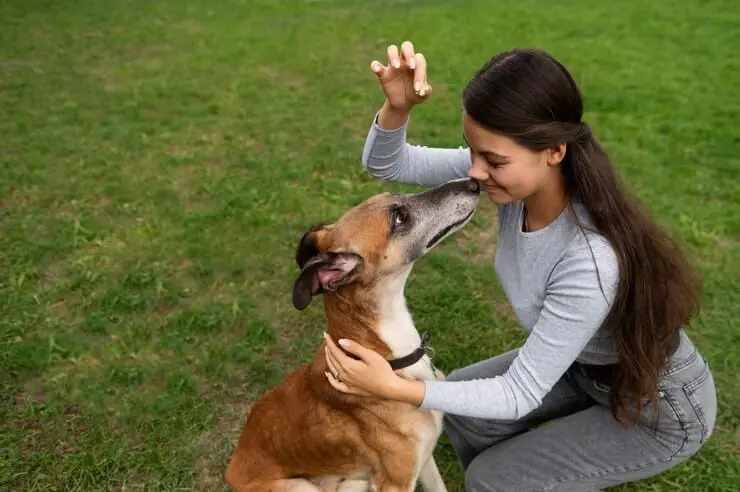
Statewide Dog Park and Recreation Laws
Unlike leash laws or dog waste disposal regulations, Montana doesn’t have a single, unified set of laws governing dog parks and recreation areas. The authority to establish and manage dog parks and set access rules for dogs in recreation areas falls primarily on local governments. This means counties, cities, and state parks can have their own ordinances and regulations.
Local Dog Park and Recreation Ordinances
The key to enjoying dog parks and recreation areas responsibly lies in understanding local regulations. Here’s how to find them:
- County or City Website: Most local governments have their ordinances readily available online. Look for sections pertaining to “parks and recreation” or “animal control.”
- State Park Websites: Each Montana state park has its own website with information on dog access regulations.
- Contacting Park Authorities: If unclear about dog park rules or access in a specific recreation area, contact the park ranger or local animal control office for clarification.
Common Dog Park Regulations in Montana
While specifics vary, here are some common dog park regulations you might encounter in Montana:
- Leash Requirements: Some dog parks may have designated off-leash areas while requiring leashes in other sections.
- Vaccinations and Licensing: Proof of up-to-date vaccinations and dog licensing is often mandatory for using dog parks.
- Aggressive Dog Policies: Aggressive dogs or those exhibiting disruptive behavior may be asked to leave the park.
- Waste Management: Always clean up after your dog, disposing of waste properly in designated bins.
Finding Dog Parks in Montana
Many Montana cities and towns offer designated dog parks for off-leash canine fun. Here are some resources for finding dog parks in your area:
- Local Government Websites: As mentioned earlier, check your city or county website’s park and recreation section for dog park listings.
- Online Directories: Websites like BringFido Website or DogFriendly.com allow searching for dog parks by location.
Responsible Dog Ownership in Recreation Areas
While dog parks offer dedicated off-leash spaces, many Montana recreation areas have limitations on dog access. Here’s how to be a responsible dog owner in these areas:
- Leash Laws: Always adhere to leash laws in place, ensuring your dog remains under your control.
- Respect Posted Signage: Pay attention to signs indicating areas where dogs are prohibited or require leashes at all times.
- Wildlife Considerations: Be mindful of wildlife encounters. Leash your dog and avoid disturbing sensitive areas, especially during breeding seasons.
- Minimize Disruption: Maintain voice control over your dog and ensure they don’t disrupt other park users.
Etiquette for a Positive Dog Park Experience
Dog parks are intended to be social spaces for both canines and their owners. Here’s how to create a positive experience for everyone:
- Socialize Your Dog: Ensure your dog is comfortable interacting with other dogs before venturing to a dog park.
- Monitor Your Dog: Always supervise your dog, intervening if any conflicts or inappropriate behavior arises.
- Be Respectful of Others: Clean up after your dog promptly, maintain a safe distance from others if your dog is nervous, and be mindful of noise levels.
Advocacy for Dog-Friendly Recreation
Many dog owners appreciate access to dog-friendly recreation areas. Here are some ways to get involved:
- Support Parks with Dog Access: Patronize parks and trails that allow responsible dog ownership and express your appreciation.
- Stay Informed on Proposed Ordinances: Be aware of potential changes to dog access regulations and voice your opinion at public hearings.
Dog Food and Nutrition Laws in Montana
Montana, with its wide-open spaces and adventurous spirit, is a haven for outdoor enthusiasts – and their canine companions. But just like planning your own meals for treks and explorations, ensuring your dog receives proper nutrition is crucial for their health and well-being. This comprehensive guide explores the legalities and considerations surrounding dog food and nutrition in Montana.

Dog Food Laws
Unlike some states with regulations on pet food labeling or manufacturing, Montana doesn’t have a single, unified set of laws governing dog food. However, there are key factors to consider:
- Federal Regulations: The federal oversight for pet food falls under the purview of the U.S. Food and Drug Administration (FDA). The FDA sets guidelines for pet food labeling, manufacturing practices, and safety standards.
- Manufacturer Responsibility: The responsibility for ensuring the safety and nutritional adequacy of dog food lies with the manufacturer. Manufacturers must comply with FDA regulations and ensure their labels accurately reflect the ingredients and nutritional content of their products.
FDA and Dog Food Regulations
The FDA plays a crucial role in ensuring the safety and quality of pet food available in the US, including Montana. Here’s what you need to know:
- Good Manufacturing Practices (GMPs): The FDA outlines GMPs that pet food manufacturers must follow to ensure food safety throughout production.
- Labeling Requirements: Dog food labels must adhere to specific FDA regulations, including information on ingredients, guaranteed analysis, nutritional adequacy statement, and feeding instructions.
- Reporting Requirements: Manufacturers are obligated to report any potential safety hazards associated with their pet food products to the FDA.
Finding the Right Dog Food for Your Canine Companion
While there are no state-specific laws dictating dog food choices in Montana, making informed decisions about your dog’s diet is paramount. Here are some key considerations:
- Consult Your Veterinarian: Your veterinarian is your best resource for guidance on selecting a dog food appropriate for your dog’s age, breed, activity level, and any specific health needs.
- Read Dog Food Labels: Familiarize yourself with dog food labels, understanding the ingredients and guaranteed analysis to ensure your dog receives a balanced and complete diet.
- Beware of Misleading Marketing: Don’t be swayed by marketing claims alone. Focus on the ingredients and nutritional value of the dog food.
- Research Dog Food Brands: Research different dog food brands to find one with a good reputation for quality and safety.
Additional Considerations for Dog Food in Montana
While there are no specific state laws, here are some additional factors to keep in mind:
- Raw Food Diets: While some dog owners choose raw food diets, these require extra care and consultation with a veterinarian to ensure they meet all your dog’s nutritional needs.
- Homemade Diets: Homemade diets can be a viable option, but require careful planning and supplementation to guarantee a balanced diet. Consult a veterinary nutritionist for guidance.
Responsible Dog Ownership and Canine Nutrition
Understanding the FDA’s role and making informed choices about your dog’s food are key aspects of responsible dog ownership:
- Portion Control: Overfeeding can lead to obesity and related health problems. Follow the feeding instructions on your dog food based on your dog’s weight and activity level.
- Fresh Water: Always ensure your dog has access to clean, fresh water at all times.
- Monitor Your Dog’s Weight: Regularly monitor your dog’s weight and adjust their food intake if needed.
- Observe Your Dog’s Health: Be mindful of any changes in your dog’s behavior, energy levels, or digestion that might indicate dietary issues.
Dog Health and Veterinary Care Laws in Montana
Montana, with its breathtaking scenery and vast outdoor adventures, is a paradise for dog owners and their furry friends. But just like with human healthcare, ensuring your dog receives proper veterinary care is crucial for their well-being. This comprehensive guide explores the legalities and considerations surrounding dog health and veterinary care in Montana.

Dog Health and Veterinary Care Laws
Unlike some states with mandatory rabies vaccination laws, Montana doesn’t have a single, unified set of laws governing dog health and veterinary care. However, there are regulations and considerations you should be aware of:
- Rabies Vaccination: Rabies vaccination is mandatory for all dogs over four months old in Montana. Ensure your dog’s rabies vaccination is current and documented by a certificate for potential travel within or outside the state.
- Animal Cruelty Laws: Montana has animal cruelty laws that prohibit intentional infliction of suffering or death upon an animal.
- Veterinary Licensing: Only licensed veterinarians can diagnose and treat animal health conditions in Montana.
Rabies Vaccination Requirements
Rabies is a deadly virus that can infect both animals and humans. Vaccination plays a vital role in protecting your dog and public health. Here’s what you need to know:
- Vaccination Age: Puppies must be vaccinated for rabies at or after four months of age.
- Booster Shots: Rabies vaccination booster shots are required every one or three years, depending on the vaccine used.
- Proof of Vaccination: Maintain a copy of your dog’s rabies vaccination certificate for your records and potential travel needs.
Montana’s Animal Cruelty Laws and Your Dog’s Well-Being
Montana’s animal cruelty laws aim to protect animals from neglect and abuse. Here’s what these laws entail:
- Minimum Care Standards: The law mandates providing animals with basic necessities like food, water, shelter, and veterinary care to prevent suffering.
- Reporting Requirements: If you suspect animal cruelty, you are legally obligated to report it to the authorities.
Licensed Veterinarians and Ensuring Quality Dog Care
Veterinarians play a crucial role in maintaining your dog’s health and well-being. Here’s what to know about veterinary care in Montana:
- Veterinary Licensing: Only licensed veterinarians who meet specific qualifications can legally diagnose and treat animal health conditions.
- Finding a Veterinarian: Research and choose a veterinarian who aligns with your needs and your dog’s specific requirements.
- Routine Veterinary Checkups: Schedule regular veterinary checkups for your dog, even if they seem healthy. These preventive measures can identify potential issues early and ensure your dog lives a long, healthy life.
Responsible Dog Ownership and Canine Health
While laws establish a basic framework, responsible dog ownership goes beyond legal requirements:
- Vaccinations and Parasite Prevention: Maintain your dog’s vaccinations and parasite prevention medications according to your veterinarian’s recommendations.
- Healthy Diet and Exercise: Provide your dog with a balanced diet and regular exercise to promote optimal health and weight management.
- Dental Care: Regularly brush your dog’s teeth or provide dental chews to maintain good oral hygiene.
- Spaying or Neutering: Consider spaying or neutering your dog to help control pet populations and potentially reduce the risk of certain health problems.
Dog Identification and Microchipping Laws in Montana
Montana’s vast landscapes and adventurous spirit beckon dog owners and their canine companions. But ensuring your furry friend stays safe and can be reunited with you if they get lost is paramount. This comprehensive guide explores the legalities and considerations surrounding dog identification and microchipping in Montana.

Mandatory Dog Identification Laws
Unlike some states with mandatory dog licensing laws, Montana doesn’t have a single, unified law requiring dog identification. However, there are regulations and considerations that emphasize the importance of proper identification:
- Local Ordinances: Many Montana cities and counties have ordinances requiring dog licensing within their jurisdiction. These licenses typically serve as a form of identification and may be linked to vaccination records.
- Animal Control Requirements: Animal control agencies might require identification proof (such as a collar with a license tag) when reclaiming a lost dog.
Local Dog Licensing Ordinances
While not statewide, many Montana localities have ordinances mandating dog licensing. Here’s what you need to know:
- Licensing Requirements: Check with your local animal control agency or city/county website for information on dog licensing requirements in your area.
- Benefits of Licensing: Dog licenses often generate revenue used for animal control services, shelters, and rabies vaccination programs.
- Proof of Identification: A dog license typically serves as a form of identification and might be linked to your dog’s vaccination records.
Microchipping: A Permanent Form of Identification
While licensing is crucial, microchipping offers a permanent and more reliable form of dog identification in Montana. Here’s why microchipping is highly recommended:
- Microchip Implant: A microchip, the size of a grain of rice, is implanted painlessly between your dog’s shoulder blades.
- Unique Identification Number: Each microchip holds a unique identification number linked to your contact information in a national database.
- Reuniting Lost Dogs with Owners: If your dog gets lost and ends up at a shelter or veterinary clinic with a microchip scanner, they can be quickly identified and returned to you.
The Importance of Updating Your Dog’s Microchip Information
Microchipping is only effective if the contact information is current. Here’s what to remember:
- Registering Your Microchip: After implantation, register the microchip with a reputable pet recovery database and keep your contact information updated.
- Address and Phone Number Changes: If you move or change your phone number, update your information in the microchip database to ensure your dog can be found.
Responsible Dog Ownership and Identification
While laws vary by location, responsible dog ownership puts the focus on proactive identification:
- Collar and ID Tag: Always equip your dog with a well-fitting collar and a securely attached ID tag that includes your name, phone number, and potentially rabies vaccination information.
- Microchipping: Microchip your dog regardless of local licensing mandates.
- Engraved Tags: Consider engraved tags with your contact information for a more permanent solution on the collar.
Dog Breeding and Genetics Laws in Montana
Montana’s wide-open spaces and love for outdoor adventures extend to canine companions. But for those considering breeding dogs, understanding the legalities and responsible practices is crucial. This comprehensive guide explores the regulations and considerations surrounding dog breeding and genetics in Montana.

Dog Breeding Laws
Unlike some states with regulations on kennel licensing or commercial breeding operations, Montana doesn’t have a single, unified set of laws governing dog breeding. However, there are key factors to consider:
- Local Ordinances: Some Montana cities and counties have ordinances related to animal breeding within their jurisdiction. These might involve limitations on the number of breeding dogs allowed per household.
- Animal Welfare Laws: Montana’s animal cruelty laws apply to breeding operations, ensuring the well-being of breeding dogs and puppies.
- Focus on Responsible Breeding: While there aren’t extensive regulations, responsible breeding practices are highly encouraged.
Local Dog Breeding Ordinances
While state-wide laws are absent, some Montana localities might have ordinances regarding breeding dogs. Here’s how to find them:
- City or County Website: Most local governments have their ordinances readily available online. Look for sections pertaining to “animal control” or “kennel licensing.”
- Contacting Local Animal Control: Your local animal control agency can provide information on any breeding-related ordinances in your area.
Animal Welfare Laws and Responsible Breeding in Montana
Montana’s animal cruelty laws extend to breeding operations, ensuring the well-being of breeding dogs and puppies:
- Minimum Care Standards: The law mandates providing breeding dogs with basic necessities like food, water, shelter, and veterinary care to prevent suffering.
- Responsible Breeding Practices: This includes breeding healthy dogs with good temperaments, avoiding excessive breeding, and ensuring proper socialization of puppies.
- Reporting Requirements: If you suspect animal cruelty in a breeding operation, you are legally obligated to report it to the authorities.
The Importance of Responsible Dog Breeding Practices
Responsible breeding goes beyond the legal minimums. Here’s why it’s crucial:
- Genetic Health Testing: Breed specific genetic health screenings help reduce the risk of passing on inherited diseases to puppies.
- Proper Temperament Selection: Breeding dogs with good temperaments promotes well-adjusted and trainable canine companions.
- Pregnant and Nursing Care: Providing proper care for pregnant and nursing dogs ensures the health of both mother and puppies.
- Socialization and Enrichment: Early socialization with people, other dogs, and different environments helps puppies develop into confident and well-adjusted dogs.
Finding Reputable Dog Breeders in Montana
If you’re looking for a puppy from a responsible breeder in Montana, here are some tips:
- Research Breeder Organizations: Look for breeders affiliated with reputable organizations like the American Kennel Club (AKC) or breed-specific clubs. These organizations often have guidelines for ethical breeding practices.
- Ask Questions: Don’t be afraid to ask breeders about their breeding practices, health testing procedures, and the environment where the puppies are raised.
- Visit the Breeder’s Facility: Schedule a visit to the breeder’s facility to assess the overall environment and meet the breeding dogs and puppies in person.
- Beware of Puppy Mills: Research signs of puppy mills, such as selling multiple breeds, offering unbelievably low prices, or having dogs in poor condition.
Ethical Considerations and Responsible Breeding
While Montana doesn’t have extensive regulations, ethical considerations are key for responsible breeders:
- Selective Breeding: Focus on breeding dogs that meet the breed standard in terms of appearance and temperament.
- Transparent Communication: Be transparent with potential puppy buyers about the breed, potential health issues, and expectations for raising the puppy.
- Lifetime Support: Consider offering lifetime support to puppy buyers and guidance on responsible pet ownership.
Dog Environmental Impact Laws in Montana
Montana’s breathtaking landscapes and abundance of outdoor activities make it a haven for dog lovers and their furry companions. However, with responsible pet ownership comes the consideration of a dog’s environmental impact. This comprehensive guide explores regulations and best practices for minimizing your dog’s footprint on Montana’s natural beauty.

Specific Dog Environmental Impact Laws
Unlike some states with regulations on leash laws in specific areas or pet waste disposal mandates, Montana doesn’t have a single, unified set of laws governing dog environmental impact. Enforcement primarily falls on local authorities:
- Local Leash Laws and Park Ordinances: Many Montana cities, counties, and state parks have leash laws and park ordinances that establish designated off-leash areas and requirements for waste disposal.
- Focus on Responsible Ownership: While extensive laws are absent, the emphasis lies on responsible dog ownership practices that minimize environmental impact.
Local Leash Laws and Park Ordinances
The key to minimizing your dog’s environmental impact lies in understanding local regulations. Here’s how to find them:
- City or County Website: Most local governments have their ordinances readily available online. Look for sections pertaining to “parks and recreation” or “animal control.”
- State Park Websites: Each Montana state park has its own website with information on dog access regulations and leash requirements.
- Contacting Local Authorities: If unclear about dog waste disposal rules or leash laws in a specific area, contact your local animal control office or park ranger for clarification.
Responsible Dog Ownership for a Healthy Environment
While laws vary by location, responsible dog ownership practices significantly reduce environmental impact:
- Leash Your Dog: Always adhere to leash laws in place. Leashing your dog helps minimize disturbance to wildlife, protects sensitive ecosystems, and prevents conflicts with other park users.
- Pick Up After Your Dog: Always clean up after your dog’s waste and dispose of it properly in designated bins. Leaving waste behind pollutes waterways, can harbor harmful pathogens, and disrupts the natural environment.
- Leave No Trace Principles: Adopt “Leave No Trace” principles when venturing outdoors with your dog. Pack out all waste, including used waste bags, and avoid disturbing natural formations.
Minimizing Other Environmental Impacts
Dog ownership extends beyond waste management. Here’s how to be an eco-conscious dog owner:
- Minimize Water Usage: Use water bowls with a shut-off valve to avoid excessive water waste while offering your dog a drink.
- Sustainable Dog Products: Consider eco-friendly dog toys made from recycled materials and biodegradable waste bags.
- Travel Considerations: Plan car trips with your dog efficiently to minimize fuel consumption. Consider fuel-efficient vehicles or carpooling options.
- Supporting Sustainable Businesses: Opt for dog food brands with sustainable practices and companies that use recycled materials in their products.
Advocacy for Dog-Friendly Recreation and Environmental Awareness
Responsible dog owners and environmental enthusiasts can work together:
- Support Dog-Friendly Parks: Patronize parks and trails that allow responsible dog access and advocate for maintaining these spaces.
- Educate Others: Lead by example and educate other dog owners about responsible waste disposal practices and minimizing environmental impact.
- Volunteer for Trail Maintenance: Consider volunteering with organizations that maintain dog-friendly trails and promote responsible pet ownership in natural areas.
Dog Behavioural Training Laws in Montana
Montana’s vast landscapes and adventurous spirit are a perfect match for dog owners and their furry companions. But ensuring your dog exhibits good manners and responsible behavior goes a long way in creating a harmonious relationship not just with you, but also with your community. This comprehensive guide explores the legalities and considerations surrounding dog behavioral training in Montana.

Dog Behavioral Training Laws
Unlike some states with mandatory training requirements for aggressive dogs, Montana doesn’t have a single, unified set of laws governing dog behavioral training. However, there are key factors to consider:
- Leash Laws and Animal Control Ordinances: Leash laws and animal control ordinances in Montana cities and counties might indirectly influence the need for behavioral training. For example, a dog demonstrating aggression towards other animals or people might require training to ensure compliance with leash laws and responsible ownership.
- Focus on Responsible Ownership: The emphasis in Montana lies on responsible dog ownership, which often necessitates addressing behavioral issues through training.
Local Leash Laws and Animal Control Ordinances
While there are no mandatory training laws, local ordinances can highlight the importance of training. Here’s what you need to know:
- Leash Law Compliance: Ensuring your dog adheres to leash laws can be challenging if they exhibit uncontrolled behavior. Training helps maintain leash control and responsible behavior in public spaces.
- Animal Control Intervention: If your dog becomes involved in an incident due to behavioral issues, animal control might recommend or mandate training to prevent future occurrences.
The Importance of Responsible Dog Ownership and Behavioral Training
Beyond legal considerations, responsible ownership necessitates addressing behavioral issues:
- Safety for Others and Your Dog: A well-trained dog is less likely to be involved in incidents that could injure themselves or others.
- Harmony in the Community: Dogs with good manners are more welcome in public spaces and contribute to a positive dog-owner relationship with the community.
- Improved Quality of Life: Behavioral training can address unwanted behaviors such as excessive barking, chewing, or separation anxiety, leading to a more harmonious living environment for both you and your dog.
Finding a Qualified Dog Trainer in Montana
Choosing the right dog trainer is crucial for success. Here’s how to find a qualified professional:
- Professional Certifications: Look for trainers certified by reputable organizations like the Certification Council for Professional Dog Trainers (CCPDT) or the American Kennel Club (AKC) Canine Good Citizen (CGC) program.
- Training Methods: Research training methods and choose a trainer who utilizes positive reinforcement techniques for effective and humane training.
- Experience and References: Seek trainers with experience in addressing your dog’s specific behavioral issues and ask for references from past clients.
Addressing Underlying Issues
Behavioral issues can sometimes stem from deeper causes. Here’s what to consider:
- Consult Your Veterinarian: Rule out any underlying medical conditions that might be contributing to your dog’s behavior.
- Socialization Opportunities: Provide ample opportunities for your dog to socialize with other dogs and people in controlled environments.
- Addressing Specific Needs: Tailor your training approach to address specific behavioral concerns, such as separation anxiety or leash reactivity. Consider consulting a qualified animal behaviorist for complex issues.
Dog Protection and Rescue Laws in Montana
Montana’s breathtaking landscapes and adventurous spirit extend to its canine residents. Protecting these furry companions and ensuring their well-being is paramount. This comprehensive guide explores the legalities and considerations surrounding dog protection and rescue in Montana.

Montana’s Animal Cruelty Laws
Unlike some states with breed-specific bans or restrictions on tethering dogs, Montana’s legal framework focuses on preventing animal cruelty in general. Here’s what you need to know:
- Animal Cruelty Definition: Montana law defines animal cruelty as knowingly or negligently subjecting an animal to mistreatment or neglect. This includes:
- Overworking, beating, tormenting, torturing, injuring, or killing the animal.
- Carrying or confining the animal in a cruel manner.
- Failing to provide the animal with:
- Food and water of sufficient quantity and quality.
- Minimum protection from adverse weather conditions.
- Licensed veterinary care in cases of immediate, obvious, serious illness or injury.
- Abandoning any helpless animal or abandoning any animal on a highway, railroad, or in any other place where it may suffer injury, hunger, or exposure or become a public charge.
- Reporting Requirements: If you suspect animal cruelty, you are legally obligated to report it to a law enforcement officer or animal control agency.
Enforcing Dog Protection Laws in Montana
The responsibility for enforcing animal cruelty laws falls on multiple entities:
- Law Enforcement: Police officers and animal control personnel investigate animal cruelty complaints and have the authority to seize animals if necessary.
- District Courts: Prosecutors handle animal cruelty cases in district courts.
- Fines and Penalties: Convictions of animal cruelty can result in fines, jail time, and court-ordered restitution for veterinary care.
Dog Rescue Organizations in Montana
Montana has a network of dedicated dog rescue organizations that play a vital role in protecting and rehoming dogs in need. Here’s what you can find:
- Shelters and Rescue Organizations: These organizations take in stray, abandoned, or surrendered dogs, provide veterinary care, and work to find them loving forever homes.
- Breed-Specific Rescues: Many Montana communities have breed-specific rescue organizations dedicated to specific dog breeds.
- Volunteer Opportunities: Dog rescue organizations often rely on volunteers to help with fostering, walking dogs, fundraising events, and administrative tasks.
Finding a Lost Dog in Montana
If your dog goes missing, knowing the right steps can make a reunion more likely:
- Microchipping: Microchipping your dog and keeping your contact information updated is crucial for identification if your dog ends up at a shelter or veterinary clinic with a microchip scanner.
- Contact Local Shelters and Rescues: Notify animal shelters, rescue organizations, and veterinary clinics in your area about your missing dog. Provide detailed information and recent photos.
- Lost Pet Posters: Put up “Lost Dog” posters in your neighborhood and areas your dog frequents.
- Utilize Online Resources: Utilize online lost pet platforms and social media to spread the word and increase the chances of finding your dog.
Preventing Dog Theft in Montana
While not a widespread issue, dog theft can occur. Here’s how to minimize the risk:
- Supervise Your Dog: Never leave your dog unattended in public places or outside your home without proper supervision.
- Secure Your Yard: Ensure your yard has a secure fence to prevent your dog from escaping.
- Identification Tags: Always equip your dog with a well-fitting collar and ID tag that includes your name, phone number, and potentially rabies vaccination information.
The Importance of Responsible Dog Ownership
Beyond legal mandates, responsible dog ownership plays a vital role in protecting your canine companion:
- Proper Training and Socialization: A well-trained and socialized dog is less likely to run away or get into situations that could put them at risk.
- Preventative Care: Regular veterinary checkups, vaccinations, and parasite prevention help keep your dog healthy and prevent potential health issues.
- Licensing and Identification: Licensing your dog (if required by your locality) and microchipping with updated information are crucial steps in ensuring your dog can be identified and returned to you if they get lost.
Dog Entertainment and Work Laws in Montana
Montana’s vast landscapes and adventurous spirit extend to its canine residents. But with the rise of dog entertainment and working dog roles, understanding the legalities and considerations surrounding these activities is crucial. This comprehensive guide explores the regulations and best practices for dog entertainment and work in Montana.

Dog Entertainment and Work Laws
Unlike some states with regulations on animal performance permits or limitations on specific working dog breeds, Montana doesn’t have a single, unified set of laws governing dog entertainment and work. However, there are key factors to consider:
- Animal Welfare Laws: Montana’s animal cruelty laws apply here too, ensuring humane treatment and working conditions for dogs involved in entertainment or work activities.
- Focus on Responsible Practices: The emphasis lies on responsible practices that prioritize the dog’s well-being, safety, and training for their specific role.
Understanding Montana’s Animal Cruelty Laws
Montana’s animal cruelty laws remain the overarching framework for dog entertainment and work:
- Prohibited Actions: The law prohibits subjecting an animal to any practices that inflict unnecessary pain, suffering, or death. This applies to training methods, performance expectations, and working conditions.
- Veterinary Care Requirements: Dogs involved in entertainment or work must have access to regular veterinary checkups and appropriate veterinary care to address any health concerns.
- Breeder Considerations: If acquiring a dog for entertainment or work, ensure the breeder prioritizes responsible breeding practices that promote good health and temperament suitable for the intended purpose.
Responsible Practices for Dog Entertainment in Montana
While there are no specific regulations, responsible entertainment is key for a happy performing dog:
- Positive Reinforcement Training: Use positive reinforcement techniques to train your dog for entertainment purposes.
- Age and Breed Suitability: Choose dog breeds and ages appropriate for the type of entertainment. Puppies or breeds with high energy levels might not be suitable for all situations.
- Limited Performance Time: Ensure entertainment activities don’t exceed the dog’s physical and mental capacity. Provide adequate rest breaks and avoid prolonged exposure to harsh weather conditions.
- Focus on the Dog’s Enjoyment: The dog should enjoy participating in the entertainment. Avoid forcing them into activities that cause anxiety or fear.
Working Dogs and Regulations in Montana
While not extensively regulated, some working dog roles might have specific considerations:
- Herding Dogs: Montana has a rich ranching history, and herding dogs play a crucial role. Ensure your herding dog is properly trained and socialized to work safely with livestock.
- Search and Rescue Dogs: Search and rescue organizations often utilize trained dogs. These dogs undergo rigorous training and conditioning to perform their specialized tasks.
- Service Animals: Service animals are legally permitted to accompany their handlers in public spaces. Federal laws like the Americans with Disabilities Act (ADA) protect the rights of people with disabilities to use service animals.
Finding Reputable Dog Trainers for Entertainment or Work
Choosing the right trainer is crucial for success. Here’s how to find a qualified professional:
- Experience with Working or Entertainment Dogs: Look for trainers with experience specifically in training dogs for entertainment or work activities relevant to your needs.
- Positive Reinforcement Methods: Choose a trainer who utilizes positive reinforcement techniques for effective and humane training.
- Professional Certifications: Consider trainers certified by reputable organizations like the Certification Council for Professional Dog Trainers (CCPDT) or the National Association of Dog Obedience Instructors (NADOI).
Considerations for Dog Entertainment and Work
The well-being of your canine companion goes beyond legal mandates:
- Breed Temperament and Suitability: Select a breed with the temperament and physical capabilities suited for the intended entertainment or work role.
- Socialization and Training: Proper socialization and training are essential for any dog involved in entertainment or work activities.
- Mental and Physical Stimulation: Provide opportunities for mental and physical stimulation beyond training and work activities.
- Retirement Plans: Consider retirement plans for working dogs when they are no longer suitable for their tasks. Explore options for transitioning them to a pet role or finding them a loving retirement home.
Dog Technology and Innovation Laws in Montana
Montana’s vast landscapes and adventurous spirit extend to its canine residents. But with the rise of dog entertainment and working dog roles, understanding the legalities and considerations surrounding these activities is crucial. This comprehensive guide explores the regulations and best practices for dog entertainment and work in Montana.

Dog Entertainment and Work Laws
Unlike some states with regulations on animal performance permits or limitations on specific working dog breeds, Montana doesn’t have a single, unified set of laws governing dog entertainment and work. However, there are key factors to consider:
- Animal Welfare Laws: Montana’s animal cruelty laws apply here too, ensuring humane treatment and working conditions for dogs involved in entertainment or work activities.
- Focus on Responsible Practices: The emphasis lies on responsible practices that prioritize the dog’s well-being, safety, and training for their specific role.
Montana’s Animal Cruelty Laws
Montana’s animal cruelty laws remain the overarching framework for dog entertainment and work:
- Prohibited Actions: The law prohibits subjecting an animal to any practices that inflict unnecessary pain, suffering, or death. This applies to training methods, performance expectations, and working conditions.
- Veterinary Care Requirements: Dogs involved in entertainment or work must have access to regular veterinary checkups and appropriate veterinary care to address any health concerns.
- Breeder Considerations: If acquiring a dog for entertainment or work, ensure the breeder prioritizes responsible breeding practices that promote good health and temperament suitable for the intended purpose.
Responsible Practices for Dog Entertainment in Montana
While there are no specific regulations, responsible entertainment is key for a happy performing dog:
- Positive Reinforcement Training: Use positive reinforcement techniques to train your dog for entertainment purposes.
- Age and Breed Suitability: Choose dog breeds and ages appropriate for the type of entertainment. Puppies or breeds with high energy levels might not be suitable for all situations.
- Limited Performance Time: Ensure entertainment activities don’t exceed the dog’s physical and mental capacity. Provide adequate rest breaks and avoid prolonged exposure to harsh weather conditions.
- Focus on the Dog’s Enjoyment: The dog should enjoy participating in the entertainment. Avoid forcing them into activities that cause anxiety or fear.
Working Dogs and Regulations in Montana
While not extensively regulated, some working dog roles might have specific considerations:
- Herding Dogs: Montana has a rich ranching history, and herding dogs play a crucial role. Ensure your herding dog is properly trained and socialized to work safely with livestock.
- Search and Rescue Dogs: Search and rescue organizations often utilize trained dogs. These dogs undergo rigorous training and conditioning to perform their specialized tasks.
- Service Animals: Service animals are legally permitted to accompany their handlers in public spaces. Federal laws like the Americans with Disabilities Act (ADA) protect the rights of people with disabilities to use service animals.
Finding Reputable Dog Trainers for Entertainment or Work
Choosing the right trainer is crucial for success. Here’s how to find a qualified professional:
- Experience with Working or Entertainment Dogs: Look for trainers with experience specifically in training dogs for entertainment or work activities relevant to your needs.
- Positive Reinforcement Methods: Choose a trainer who utilizes positive reinforcement techniques for effective and humane training.
- Professional Certifications: Consider trainers certified by reputable organizations like the Certification Council for Professional Dog Trainers (CCPDT) or the National Association of Dog Obedience Instructors (NADOI).
Considerations for Dog Entertainment and Work
The well-being of your canine companion goes beyond legal mandates:
- Breed Temperament and Suitability: Select a breed with the temperament and physical capabilities suited for the intended entertainment or work role.
- Socialization and Training: Proper socialization and training are essential for any dog involved in entertainment or work activities.
- Mental and Physical Stimulation: Provide opportunities for mental and physical stimulation beyond training and work activities.
- Retirement Plans: Consider retirement plans for working dogs when they are no longer suitable for their tasks. Explore options for transitioning them to a pet role or finding them a loving retirement home.
Human Coexistence Laws in Montana
Montana’s vast landscapes and adventurous spirit are a perfect match for dog owners and their furry companions. But fostering a strong human-dog bond goes beyond just sharing adventures. This comprehensive guide explores the legalities and considerations surrounding laws that promote cohabitation and bonding between dogs and humans in Montana.
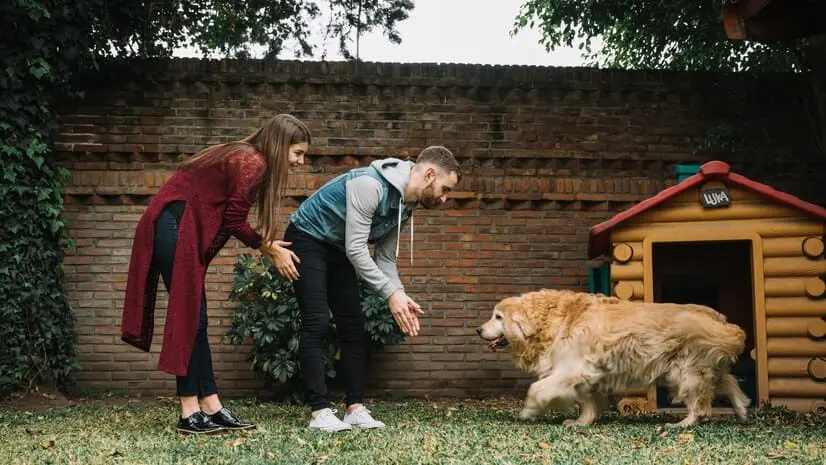
Laws Promoting Human-Dog Coexistence
While Montana doesn’t have a single, unified set of laws directly promoting human-dog cohabitation and bonding, there are legal frameworks and considerations that indirectly encourage responsible ownership and positive interactions:
- Focus on Animal Welfare: Montana’s animal cruelty laws are paramount, ensuring dogs receive proper care and treatment, fostering a positive foundation for the human-dog bond.
- Leash Laws and Park Ordinances: Many Montana cities and counties have leash laws and park ordinances that designate off-leash areas and require responsible waste disposal. These regulations encourage responsible dog ownership, facilitating positive interactions between dogs and their human companions in public spaces.
- Therapy Animal Programs: Montana healthcare facilities and institutions might have therapy animal programs that utilize trained dogs to provide emotional support and companionship to patients or residents. This highlights the potential positive impact of the human-dog bond in therapeutic settings.
Finding Dog-Friendly Places in Montana
Living with a dog goes beyond your backyard. Here’s how to find dog-friendly places in Montana:
- Dog-Friendly Parks and Trails: Many Montana State Parks and recreation areas allow dogs on trails with leash restrictions. Research dog-friendly areas before venturing out.
- Restaurants with Outdoor Patios: Several restaurants in Montana offer outdoor seating areas where well-behaved dogs are welcome. Look for restaurants with dog-friendly designations.
- Dog-Friendly Businesses: Some retail stores and businesses in Montana might allow well-behaved dogs on leashes. Check store policies before entering with your dog.
Fostering a Strong Human-Dog Bond
Building a strong bond with your dog goes beyond legal mandates. Here are some key aspects:
- Positive Reinforcement Training: Utilize positive reinforcement techniques for training, creating a positive association with you and fostering trust.
- Quality Time and Interaction: Spend quality time with your dog, engaging in activities like walks, playtime, and cuddling. This strengthens the bond and provides mental and physical stimulation.
- Socialization Opportunities: Socialize your dog with other dogs and people in controlled environments from a young age. This builds confidence and fosters positive interactions with others.
- Meeting Your Dog’s Needs: Provide your dog with proper nutrition, exercise, veterinary care, and mental stimulation. A well-cared-for dog is more likely to be happy and receptive to bonding.
Dog-Friendly Activities in Montana
Montana offers a plethora of activities to enjoy with your canine companion:
- Hiking and Camping: Explore Montana’s trails and campgrounds with your dog, following leash laws and park regulations.
- Dog-Friendly Events: Check for dog-friendly festivals, races, or gatherings in your area. These events provide opportunities for socialization and fun.
- Dog Parks: Many Montana cities and counties have designated dog parks where your dog can play off-leash with other dogs in a safe environment.
Benefits of a Strong Human-Dog Bond
The human-dog bond offers numerous benefits for both parties:
- Reduced Stress and Anxiety: Studies suggest interacting with dogs can lower stress and anxiety levels in humans.
- Increased Physical Activity: Owning a dog encourages walks, playtime, and outdoor activities, promoting a healthy lifestyle for both owner and dog.
- Improved Socialization: Dogs can be great conversation starters and help facilitate social interactions with other dog owners.
- Enhanced Sense of Purpose: Caring for a dog provides a sense of purpose and responsibility, fostering a positive emotional connection.
Other Relevant Dog Laws in Montana
Canine Good Citizen (CGC) Programs and Legal Benefits in Montana
- Canine Good Citizen (CGC) Programs: The American Kennel Club (AKC) offers CGC programs that certify dogs who demonstrate basic obedience and good manners in various situations. While not a legal requirement in Montana, completing a CGC program can have some benefits:
- Reduced Insurance Rates: Some pet insurance companies might offer discounts for dogs who complete a CGC program, indicating a well-trained and socialized pet.
- Increased Housing Options: Some landlords might show preference to tenants with dogs who have completed a CGC program, demonstrating responsible ownership.
- Positive Public Perception: A CGC-certified dog is more likely to be perceived as well-behaved in public spaces.
Dog Insurance and Coverage Laws in Montana
- Dog Insurance: While not mandated by law, pet insurance is a responsible choice for dog owners. It helps cover veterinary expenses in case of illness or accidents.
- Coverage Laws: Pet insurance policies in Montana vary by company and plan. Research different options to find coverage that suits your needs, including accident and illness coverage, wellness benefits, and liability coverage.
Laws Regarding Dogs in Hot Cars and Animal Endangerment in Montana
- Animal Cruelty Laws: Leaving a dog unattended in a hot car can be considered animal cruelty under Montana law. This applies to any situation where the car’s temperature could cause the dog to suffer or die. Penalties for animal cruelty can include fines, jail time, and court-ordered restitution for veterinary care.
- Recommendations: Never leave your dog unattended in a parked car, even with the windows cracked open. Temperatures inside a car can rise rapidly, putting your dog at risk of heatstroke.
Legal Aspects of Dog Parks and Shared Spaces in Montana
- Leash Laws and Park Ordinances: Many Montana cities and counties have leash laws and park ordinances that designate specific areas as off-leash dog parks. These ordinances typically outline rules for responsible dog ownership in shared spaces, such as cleaning up after your dog and ensuring your dog is socialized and well-behaved around other dogs and people.
- Shared Responsibility: Dog park users share responsibility for creating a safe and enjoyable environment. Be mindful of your dog’s behavior, leash them when necessary, and clean up after them.
Dog-Related Property Damage and Homeowner’s Insurance in Montana
- Dog Owner Liability: Montana follows a “strict liability” law for dog bites. This means dog owners are liable for any damages or injuries caused by their dog, regardless of the dog’s previous behavior. This extends to property damage as well.
- Homeowner’s Insurance: Most homeowner’s insurance policies in Montana include liability coverage for dog bites or property damage caused by your dog. However, some breeds might be excluded or require additional coverage. Check your policy details and consider adding liability coverage if necessary.
Service and Working Dog Laws in Employment and Public Access in Montana
- Federal Laws: The Americans with Disabilities Act (ADA) protects the rights of people with disabilities to use service animals in public spaces and public transportation. Service animals are specially trained dogs that assist people with disabilities in performing specific tasks.
- Montana Laws: Montana follows the ADA guidelines regarding service animals. Businesses and public spaces cannot discriminate against individuals with service animals.
- Working Dogs: While not explicitly addressed in a single law, working dogs like search and rescue dogs or herding dogs have specific roles and might require access to certain areas to perform their duties. These situations are typically handled on a case-by-case basis.
Animal Welfare and Protection Laws Against Neglect and Abandonment in Montana
- Animal Cruelty Laws: As mentioned earlier, Montana’s animal cruelty laws are the core framework protecting dogs from neglect and abandonment. These laws define cruelty and outline legal repercussions for violations.
- Reporting Requirements: If you suspect animal neglect or abandonment, you are legally obligated to report it to a law enforcement officer or animal control agency. By reporting suspected cruelty, you can help protect vulnerable animals.
Montana’s wide-open spaces are perfect for dog adventures, but fostering a strong human-dog bond goes beyond exploring trails. This guide explored Montana’s legal framework regarding dogs, emphasizing responsible ownership through animal cruelty prevention, positive training methods, and leash law compliance.
Understanding and complying with these dog laws benefits both owners and society. Responsible dog ownership ensures happy, well-behaved canine companions, minimizes the risk of bites or property damage, and fosters a positive image of dog ownership in Montana’s vibrant communities. By following the law and prioritizing responsible care, we can create a safe and enjoyable environment for everyone to share with our furry friends.
FAQs
Are there any breed-specific restrictions in Montana?
Montana doesn’t have any statewide breed bans or restrictions. However, some cities or municipalities might have breed-specific ordinances in place. It’s always best to check with your local animal control office or municipality to confirm any breed-related regulations in your area.
Do I need to license my dog in Montana?
Licensing requirements for dogs vary by location in Montana. Most cities and counties require dog licensing, which helps with animal identification, lost pet recovery, and responsible pet ownership initiatives. Contact your local animal control office or municipality to learn about licensing procedures and fees in your area.
What are the vaccination requirements for dogs in Montana?
Montana law requires all dogs over four months of age to be vaccinated against rabies. Some municipalities might have additional vaccination requirements, so check with your local veterinarian or animal control office to ensure your dog is up-to-date on all necessary vaccinations.
Can I take my dog swimming in public lakes or streams?
There are no statewide restrictions on dogs swimming in public lakes or streams in Montana. However, some public recreation areas might have leash laws or specific regulations regarding dogs in the water. Always check signage or contact the park management before allowing your dog to swim in a public body of water.
What are the laws regarding barking dogs in Montana?
Montana doesn’t have a specific law addressing barking dogs. However, excessive or continuous barking that creates a nuisance for neighbors might fall under noise ordinance violations in your city or county. If you’re having trouble with a neighbor’s barking dog, it’s best to try a friendly conversation with the neighbor first. If the issue persists, you might need to file a noise complaint with your local animal control office.

